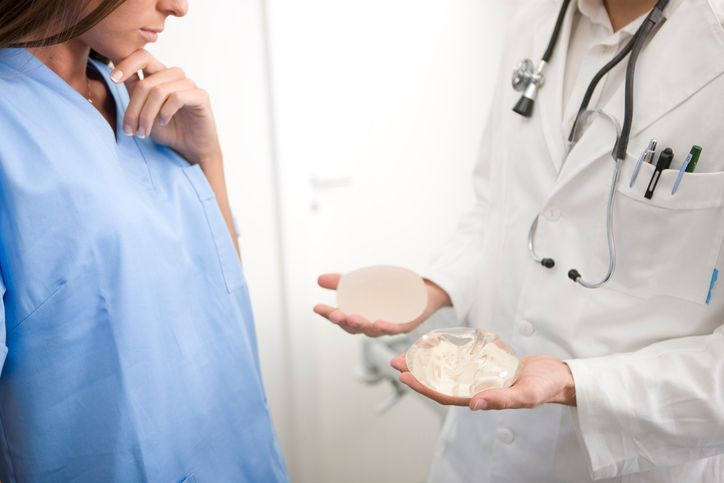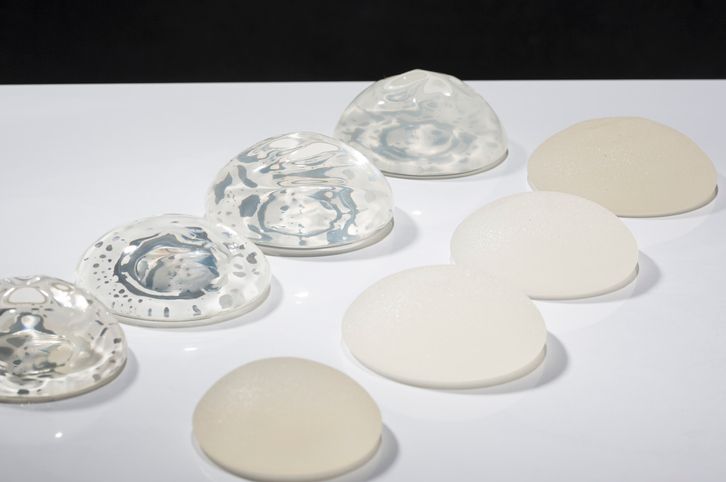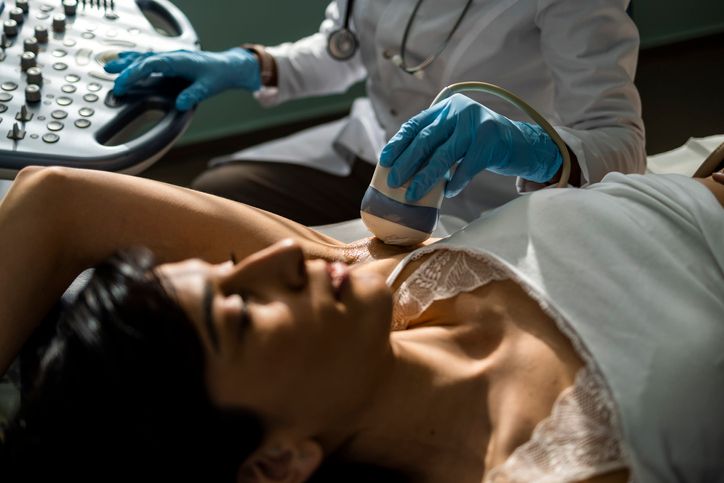

Book Now to Experience
B6 Bust Lift Treatment
1 Minute Self-Registration
Date should not be before minimal date
Author: Puteri Fikri|Updated: 2 January 2024
Are you considering breast implants? Learn about the history, public view, procedure and after care. Get yourself well versed in the long-term health risks and psychological effects.
1
A brief about breast implants

Breast implants have a long history that dates back to the early twentieth century. Dr. Vincenz Czerny, a German surgeon, performed the first breast implant operation in 1895, transplanting a benign tumor from a patient's back to her breast to restore its shape. Modern breast implant technology, however, did not emerge until the 1960s, with the introduction of the first silicone gel implants.
Breast implant surgery became increasingly popular among women looking to improve their looks during the 1960s and 1970s. Concerns regarding the safety of silicone implants, however, first surfaced in the 1980s, with tales of ruptures, leaks, and other issues. The FDA banned the use of silicone implants for cosmetic purposes in 1992, citing safety concerns.
Throughout the 1990s, there were numerous lawsuits filed against implant makers, as well as claims of health concerns related with the devices. The FDA overturned the ban on silicone implants in 2006, but only with stringent controls in place to ensure their safety.
Breast implant technology has evolved throughout time, with advancements in materials, procedures, and surgical approaches. When it comes to breast implant surgery, patients now have a variety of alternatives, including saline and silicone implants, as well as fat transfer techniques.
Despite the controversies surrounding breast augmentation, they continue to be a popular cosmetic operation, with millions of women worldwide undergoing the procedure each year. While there are hazards involved with breast augmentation, the benefits in terms of greater self-confidence and self-esteem outweigh the risks for many women. Breast implant surgery is anticipated to evolve and improve as technology advances, providing patients with even more alternatives for getting the desired look.
2
Current trend for breast implants

Breast implant trends are continually changing, influenced by a range of variables such as celebrity culture, fashion trends, and medical technology advancements. Breast augmentation have become more natural-looking in recent years, with patients preferring smaller, more appropriate sizes and forms. This tendency can be seen in the growing popularity of "gummy bear" implants, which are constructed of a cohesive silicone gel that keeps its shape and texture over time.
In addition to the trend towards more natural-looking implants, the usage of fat transfer treatments for breast augmentation has increased. This procedure involves removing fat from other regions of the body, such as the abdomen or thighs, and injecting it into the breasts to add volume and contour. While this approach is not appropriate for all people, it can provide a more natural-looking implant and outcome while avoiding the use of foreign materials.
3
Types of breast implants

Silicone implants continue to be the most common breast implant material among patients. Alternative materials, including saline and structured implants, are gaining popularity. Structured implants use a series of nested shells to give a more natural-looking outcome, whereas saline implants are filled with sterile saltwater and can be modified in size after the plastic surgeons during surgery itself.
A variety of psychological variables frequently impact the choice to get breast implant Breast size and form can be a significant source of concern and insecurity for many women especially when they have sagging or droopy breasts, prompting them to seek surgical remedies to improve their self-esteem and body image.
4
How breast implants help individuals psychology health

Women who have breast implant surgery report gains in a number of psychological outcomes, including body image, self-esteem, and sexual pleasure, according to research. Following the operation, many breast imaging patients report feeling more confident and comfortable in their own skin, with a stronger sense of control over their look and body image.
It is crucial to emphasize, however, that breast implant surgery is not a cure-all for all psychological disorders connected to body image. While it helps boost self-esteem and confidence in many circumstances, it is not a replacement for therapy or other types of psychological support. If their expectations are not realised or difficulties emerge, patients may experience unfavourable psychological effects such as depression or anxiety following breast implant surgery.
Patients should also carefully analyze their motivations for considering breast implant surgery to ensure that they are making the decision for themselves rather than under pressure from others. Patients should have reasonable expectations regarding the breast implant procedure and plastic surgery's potential outcomes and be aware of the possible risks and consequences connected with breast augmentation.
Finally, the decision to have breast implant surgery is highly personal and should be based on the individual's objectives, motivations, and overall health and well-being. Patients should collaborate extensively with their surgeon to evaluate the breast implant procedure's potential psychological impact and to design a treatment plan that is tailored to their own needs and preferences.
The psychology behind breast augmentation
For decades, breast augmentation has been the source of controversy and debate, with questions regarding their safety and potential health hazards. While breast enhancements are generally regarded as safe, patients should be aware of some potential health hazards linked with the process.

Book Now to Experience
B6 Bust Lift Treatment
1 Minute Self-Registration
Date should not be before minimal date
5
Does breast implants related to autoimmune disease

The possibility of a relationship between breast augmentation and autoimmune illnesses is one source of concern for plastic surgeons. Some studies have revealed that women who receive breast augmentation are more likely to develop autoimmune illnesses such as rheumatoid arthritis and lupus. However, the evidence is inconsistent, and further research is required to completely comprehend the link between breast augmentation and autoimmune illnesses.
Furthermore, breast implants can occasionally result in issues such as infection, bleeding, and scarring. Implants can also rupture or leak, causing pain, edema, and changes in breast form and size.
Patients should work closely with their physician to select the correct type of implant and surgical method to limit the risk of health issues connected with breast augmentation. It is also critical to carefully follow all pre- and post-operative instructions, including refraining from smoking and engaging in other activities that may raise the risk of problems.
Possible complications
Patients should also be aware of potential health complications associated with breast augmentation, such as changes in breast shape, discomfort, swelling, or fever. Regular check-ups with a healthcare professional, as well as rapid attention to any concerns, can aid in the detection and treatment of potential health issues.
Overall, while breast augmentation can be a safe and effective technique to increase breast size and form, patients should carefully weigh the risks and advantages before proceeding with the treatment. Patients can limit their risk of issues and enjoy the benefits of breast implants with confidence by working closely with their surgeon and following all prescribed rules and precautions.
6
Silicone breast implants

One of the most frequent types of breast implants used in breast augmentation surgery is silicone breast implants. They are constructed of a silicone outer shell that is filled with a silicone gel or cohesive silicone gel that is supposed to make breast volume appear and feel like genuine breast tissue.
These implants are available in a range of shapes, sizes, and textures, and can be tailored to each patient's specific needs and preferences. They are normally introduced through a breast or underarm incision and positioned below the breast tissue or behind scar tissue and the chest muscle.
Why silicone implant become the popular choice
One of the advantages of these implants is their natural appearance and feel. Some implants contain a cohesive silicone gel that is designed to stay in place and keep its shape, resulting in a more natural-looking breast augmentation.
There are, however, dangers and difficulties connected with these implants. The danger of implant rupture or leaking, which can cause discomfort, edema, and changes in breast shape or size, is one source of concern. If a silicone implant ruptures or leaks, the silicone gel may travel to other parts of the patient's body, causing inflammation, infection, or other health problems.
Patients should work closely with their physician to select the correct type of implant and surgical method to limit the risk of problems associated with silicone breast implants. Patients should also carefully follow all pre- and post-operative instructions, as well as attend regular follow-up sessions to ensure that their implants are in good working order.
For many individuals, these implants can be a safe and effective technique to improve breast size and form. However, before undergoing the treatment, patients should carefully assess the potential dangers, possible complications and advantages of breast surgery, and work together with their physician to obtain the best possible outcomes.
7
Breast augmentation surgery

Breast augmentation surgery is a used cosmetic surgery technique that enlarges breasts through breast lift and shapes the breasts. Breast implants filled with silicone gel or saline solution are often inserted during the procedure to provide a larger and more symmetrical appearance.
The following is a step-by-step breakdown of the reconstructive surgery:
Consultation
The first stage in the surgery procedure is to schedule a consultation with a certified plastic surgeon. During this appointment, the a plastic surgeon will review the patient's medical history, examine their breasts, and discuss their surgical goals and expectations. The consultant plastic surgeon will also describe the breast enhancement procedure's risks and benefits, as well as assist the patient in selecting the type, size, and placement of the breast implants.
This surgery is often conducted under general anesthesia, which means the patient will be sleeping throughout the process. Local anesthesia and sedation may be used instead in rare circumstances.
The surgeon will make an incision in the breast, commonly in the crease beneath the breast, around the areola, or in the armpit. The size and placement of the incision will be determined by the type of implants removed, cup size of implant used, the patient's anatomy, and the surgeon's preference.
Implant placement
The breast implant will then be inserted through the incision and placed behind the breast tissue or beneath the chest muscle by the surgeon. The location of the implant will be determined by the patient's anatomy, the type cup size of implant, and the intended outcome.
Sutures, glue, or surgical tape will be used to close the incision once the implant has been placed.
After the procedure, the patient will be transferred to a recovery area where they will be attentively followed while they awaken from anesthesia. The patient will be given pain medication and surgical bra as well as instructions for caring for their surgical incisions and implants.
Follow-up appointments
The patient will need to return to the surgeon every few weeks for follow-up sessions to assess their healing and verify that their implants are correctly settling. Regular mammograms or other imaging tests may also be recommended by the surgeon to monitor the health of the breast tissue.
Breast implant surgery is a difficult process that necessitates the expertise of a qualified and experienced plastic surgeon. Patients should carefully weigh the risks and benefits of the breast cancer operation and collaborate with their surgeon to achieve the best possible results.
FAQs
What are the types of breast augmentations available?
How do I determine the best size for my breast implants?
What are the risks of breast implant surgery?
What is the average lifespan of breast implants?
How long does it take to recuperate from breast implant surgery?

Book Now to Experience
B6 Bust Lift Treatment
1 Minute Self-Registration
Date should not be before minimal date
